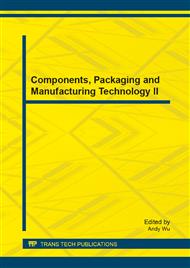p.15
p.20
p.27
p.34
p.38
p.44
p.47
p.50
p.56
A Discrimination Method of Saturated Sand Liquefaction Possibility Based on Support Vector Machine
Abstract:
Based on the analysis of influence factors of saturated sand, this paper expounds the limitations of traditional evaluation of liquefaction, and introduces the criterion of support vector machine (SVM) based on the principle of structural risk minimization. According to the main influence factors of sand liquefaction, a SVM discriminant model of sand liquefaction with different kernel functions is established. Through studying small sample data, this model can establish nonlinear mapping relationship between influence factors and liquefaction type. On the basis of seismic data, a radial based kernel function is selected to predict sand liquefaction type. The research results show that the predicted magnitude is identical with the actual result, to prove that it is effective to apply this SVM model to evaluate the level of sand liquefaction.
Info:
Periodical:
Pages:
38-43
Citation:
Online since:
February 2014
Authors:
Price:
Сopyright:
© 2014 Trans Tech Publications Ltd. All Rights Reserved
Share:
Citation:


